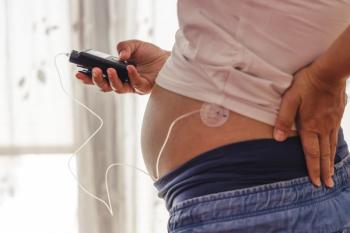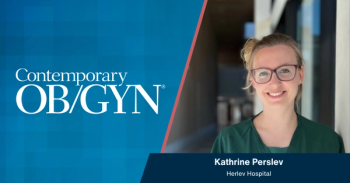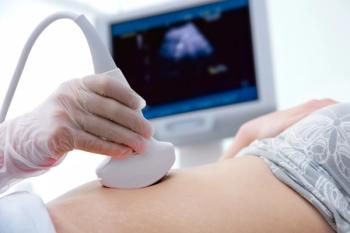
Greater adherence and reduced cost reported for mailed HPV tests
A new study shows that directly mailing human papillomavirus self-sampling kits improves screening adherence and offers superior cost-effectiveness.
A study published in JAMA Network Open has found that mailed human papillomavirus (HPV) self-sampling kits are more cost-effective than other strategies in patients adhering and overdue for screening.1
Cervical cancer incidence and mortality are significantly reduced by screening, but a decline in adherence has been reported among US patients, from 86% in 2005 to 73% in 2021.2 As patients can perform HPV collection at home, trials have been conducted highlighting the feasibility and cost-effectiveness of this method.1
“This information could inform health care systems on optimal strategies for implementing home-based cervical cancer screening programs,” wrote investigators.
Direct mail vs opt-in and usual care analyses
The study was conducted to evaluate the efficacy of mailing HPV self-sampling kits toward continued screening adherence. Participants included Kaiser Permanente Washington (KPWA) with adherent, overdue, or unknown cervical cancer screening histories. Adherence was defined as screening within the past 3 months.
Additional eligibility criteria included being aged 30 to 64 years and due or overdue for cervical cancer screening with current KPWA enrollment and an intact cervix. Patients with a prior abnormal screen, current pregnancy, or need for an interpreter were excluded from the analysis.
Participants were randomized to usual care, education, direct mail, or opt-in groups, though overdue individuals were not included in the opt-in group. Three reminder calls were conducted for participants who did not return the kit within 3 weeks.
Evaluating cost-effectiveness
Screening participation within 6 months following randomization was reported as the primary outcome. This was determined based on in-clinic screening, kit return with test results, or kit return with in-clinic Papanicolaou testing. Electronic health record and claims data was used to assess screening completion.
Cost-effectiveness and incremental cost-effectiveness ratio were reported as secondary outcomes. Investigators reported costs as the value of resources used to incorporate mailed HPV self-screening kits into practice, measured using data recorded in the KPWA cost database.
There were 31,555 patients aged a mean 45.9 years included in the final analysis, 41.4% of whom were screening adherent, 26.3% overdue for screening, and 31.6% had unknown screening histories. Of screening adherent patients, 61.7% randomized to direct mail completed screening, vs 51.1% randomized to opt-in and 47.6% to education.
Screening completion rates by group
In comparison, screening was completed by 35.7% of overdue patients randomized to direct mail vs 18.8% to education. Screening was also completed by 18.1% of patients with an unknown history randomized to opt-in vs and 15.9% randomized to education.
Nonsignificant differences in returning HPV self-sampling kits were reported between education vs usual care regardless of screening history. Notable rates of returning the kit included:
- 64.9% in the adherent and direct mail group
- 21.3% in the adherent and opt-in group
- 63.4% in the overdue and direct mail group
- 17.8% in the unknown history and opt-in group.
Significantly improved cost-effectiveness was reported for direct mail HPV kits vs all other methods in adherent patients. Greater cost-effectiveness was also reported in overdue patients, with a cost ranging from $19 to $63 per screening.
Cost-effectiveness outcomes
Usual care was also greatly surpassed by the opt-in strategy in patients with an unknown screening history. The odds of cost-effectiveness for both direct mail and opt-in screening were 100% in patients with adherence, with the former being cost-effectiveness in 97% when willingness to pay (WTP) was $0 vs 100% when WTP was $44 in those overdue.
Finally, the odds of cost-effectiveness were 74% for the opt-in strategy among patients with unknown screening history with a WTP of $0 vs 100% when the WTP was $242. Overall, the data highlighted economic superiority for directly mailing HPV self-sampling kits.
“Direct mailing may become even more efficient as the use of HPV self-sampling expands in the US, which should be a focus of future economic evaluations,” wrote investigators.
References
- Meenan RT, Lacey C, Buist DSM, et al. Cost-effectiveness of HPV self-testing options for cervical cancer screening. JAMA Netw Open. 2025;8(10):e2534960. doi:10.1001/jamanetworkopen.2025.34960
- Star J, Bandi P, Nargis N, et al. Updated review of major cancer risk factors and screening test use in the United States, with a focus on changes during the COVID-19 pandemic. Cancer Epidemiol Biomark Prev. 2023;32(7):879-888. doi:10.1158/1055-9965.EPI-23-0114
Newsletter
Get the latest clinical updates, case studies, and expert commentary in obstetric and gynecologic care. Sign up now to stay informed.















